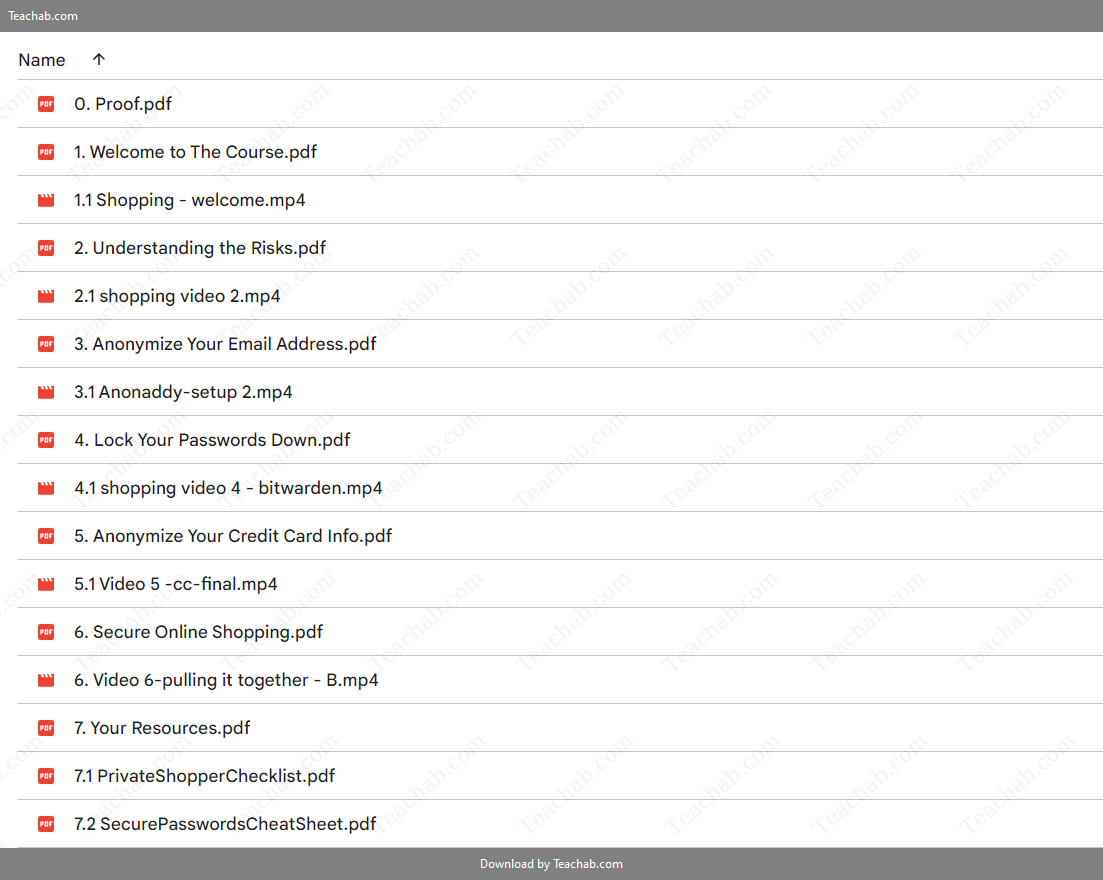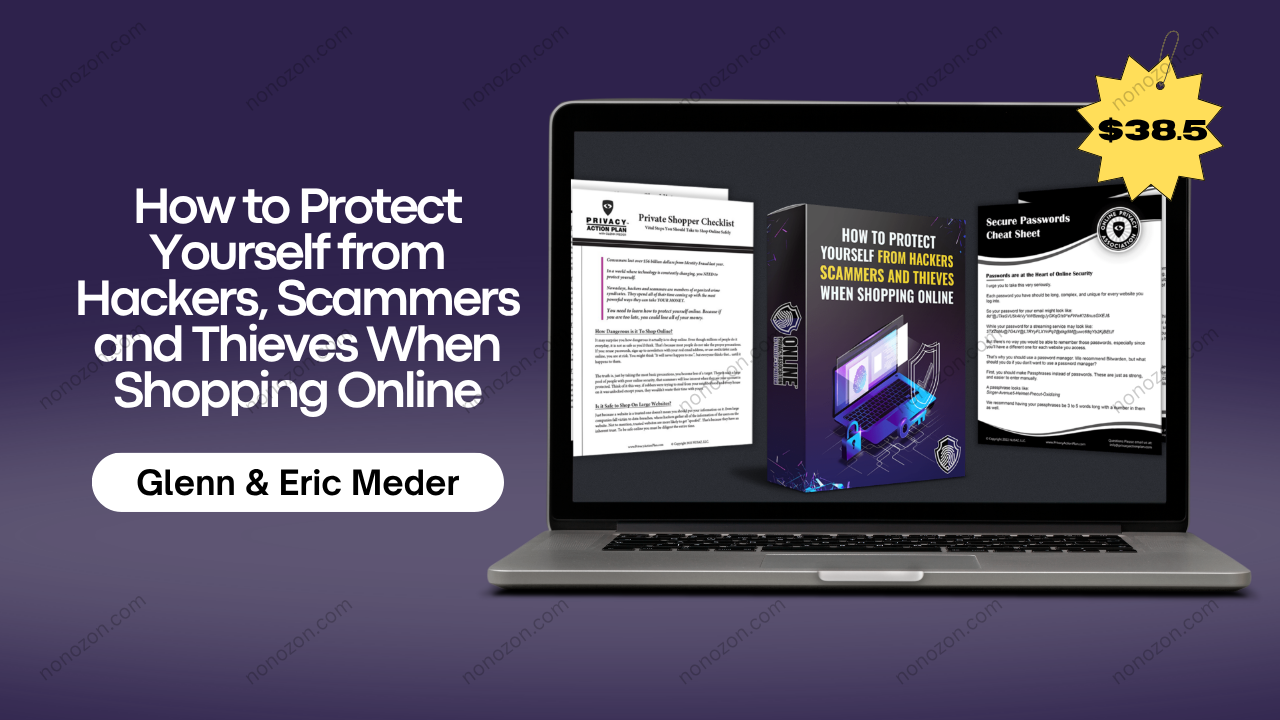How to Protect Yourself from Hackers, Scammers and Thieves When Shopping Online
by Glenn & Eric Meder
How to Protect Yourself from Hackers, Scammers and Thieves When Shopping Online
Check proof of content here:

In today's fast-paced digital age, the ease and convenience of online shopping come with a hidden cost—security risks. Every transaction, every click, exposes consumers to potential cyber threats. Tempting deals may lead not just to bargains but to vulnerabilities exploited by hackers, scammers, and identity thieves. Glenn and Eric Meder offer timely and essential guidance to help fortify your online shopping habits. Their strategies serve not only as practical defenses but also as a wake-up call to the importance of protecting personal information in our hyper-connected world.
Understanding the dangers of shopping online is like preparing for a trek through unfamiliar territory—you need to know what to expect to stay safe. Picture a bustling digital bazaar, where not everyone has good intentions. This guide aims to equip you with the tools to navigate that marketplace safely, highlighting actionable steps to enhance your online security without sacrificing the joys of e-commerce.
Common Threats in Online Shopping
Understanding the Online Threat Landscape
With billions of online transactions occurring daily, the internet has become a prime hunting ground for cybercriminals. These digital adversaries exploit both technical weaknesses and human oversight. Just as a castle’s defenses repel invaders, effective cybersecurity practices act as a bulwark for your private data. Among the most prevalent threats are phishing schemes, identity theft, and counterfeit websites—each capable of causing serious financial and emotional damage.
Phishing, in particular, remains a major threat. Criminals send deceptive messages that appear to be from legitimate companies, tricking users into revealing sensitive details. A recent report revealed that over 90% of cyberattacks begin with phishing, underscoring how reliant hackers are on human mistakes. Think of it this way: just as you wouldn’t leave your front door wide open in a high-crime neighborhood, you shouldn’t leave your digital front door unsecured online.
Characteristics of Online Scams
Scammers today are more sophisticated than ever. Fraudulent sites can closely mimic real ones, drawing shoppers in with deeply discounted prices and urgent offers. Learning to recognize these traps is essential. For example, malicious URLs often mimic real businesses but include subtle changes—such as a misspelled word or a different domain extension.
A closer look at these websites can reveal their true nature. Poor grammar, typos, and amateur layouts often point to a scam. In contrast, trustworthy websites include clear return policies, verified payment methods, customer service contacts, and transparent privacy policies. Staying alert and scrutinizing these details can help you tell the difference between a secure site and a deceptive one.
Instant Download How to Protect Yourself from Hackers, Scammers and Thieves When Shopping Online by Glenn & Eric Meder

Strategies to Protect Yourself
Strong, Unique Passwords
Creating strong, one-of-a-kind passwords is one of the simplest yet most effective ways to protect your accounts. A robust password should blend uppercase and lowercase letters, numbers, and special characters. Think of it as turning a plain key into a master lock—adding complexity that makes it far harder to crack.
Reusing the same password across platforms is a major security risk. If one account is compromised, all linked accounts become vulnerable. To make things easier, use a password manager. These tools securely store and manage your passwords, ensuring every digital “door” has a different key.
Multi-Factor Authentication (MFA)
Multi-factor authentication adds an extra level of defense by requiring a second form of verification—such as a code sent to your phone—on top of your password. It’s like needing both a key and a fingerprint scan to get in. Even if a cybercriminal gets hold of your password, MFA typically stops them from accessing your account.
Data shows that MFA reduces the likelihood of an account breach by up to 99.9%. It’s an effective way to block unauthorized users from logging in, just like a strong deadbolt protects a physical home from break-ins.
Regular Software Updates
Keeping your software up to date is a crucial habit in protecting your digital life. Hackers often exploit outdated apps and systems that haven’t been patched. Each update you install strengthens your system’s defenses.
The 2017 WannaCry ransomware attack is a perfect example: it exploited an old vulnerability in Microsoft systems, infecting hundreds of thousands of machines. Regular updates are a minor inconvenience compared to the potential fallout from an unpatched system.
Navigating Public Wi-Fi Safely
Risks of Public Wi-Fi
Free Wi-Fi in airports, coffee shops, and hotels may be convenient, but it often lacks proper security. Using these networks without precautions is like sharing sensitive documents in a public square—you never know who might be watching.
When you must use public Wi-Fi, connect through a Virtual Private Network (VPN). VPNs encrypt your data, preventing outsiders from intercepting your online activities. This encrypted tunnel allows you to browse, shop, and bank with greater peace of mind—even in public places.
Monitoring for Identity Theft
Keeping a close watch on your bank accounts, credit card statements, and credit reports is key to catching fraud early. Think of it as routinely checking your valuables in a crowded space—you want to spot anything unusual before it escalates.
Research shows nearly 1 in 15 individuals experiences identity theft annually. Regularly monitoring your financial activity and reporting anything suspicious immediately can help mitigate the damage and prevent further unauthorized use.
Online Shopping Best Practices
Being Skeptical of Unknown Communications
In the digital realm, where anyone can pretend to be someone else, a healthy dose of skepticism can go a long way. Treat unexpected emails, pop-ups, or messages requesting personal data with caution. Just as you’d be wary of a stranger offering you a drink at a party, approach unsolicited online offers with suspicion.
Always verify the source of messages, and never click links or download attachments from unknown contacts. When in doubt, go directly to the company’s official website to confirm any claims.
Examining URLs and Website Content
Before completing any online purchase, double-check the URL in your browser. Scammers frequently create lookalike web addresses to deceive users. Ensure the site starts with “https://” and doesn’t contain subtle typos or unfamiliar domain extensions.
Quality websites also show their legitimacy through clear, professional design, grammatically sound content, and multiple contact options. If something feels off, it probably is—better to walk away than risk your data.
Engaging with Comprehensive Security Solutions
Utilizing Trusted Internet Security Suites
Relying on a reputable internet security suite provides a multi-layered defense against a variety of online threats. These programs typically combine real-time virus scanning, phishing protection, and firewall features to secure your device.
Brands like Norton, Bitdefender, and McAfee offer dependable software that not only defends your system but also helps educate users about ongoing cyber threats. While there may be a small cost, the protection is a worthwhile investment in your digital safety.
Continuous Education on Cybersecurity
Ongoing education is crucial for staying one step ahead of cybercriminals. Resources like the Privacy Academy—co-created by Glenn Meder—offer valuable information about privacy tools, scam alerts, and secure browsing habits. The digital environment changes quickly, and staying informed empowers you to respond proactively rather than reactively. The more you know, the better decisions you can make to protect your digital life.
Conclusion
While shopping online can sometimes feel like venturing into risky territory, preparation and awareness transform that experience into a secure and enjoyable one. By applying the strategies shared by Glenn and Eric Meder—and by adopting smart online habits—you significantly decrease the risk of falling prey to cybercrime. Much like a seasoned traveler packs tools for safety, carrying knowledge and precautions into your online adventures helps ensure you enjoy the benefits of e-commerce without the dangers. Take these strategies to heart and shop with confidence, knowing your identity and data are well guarded.




